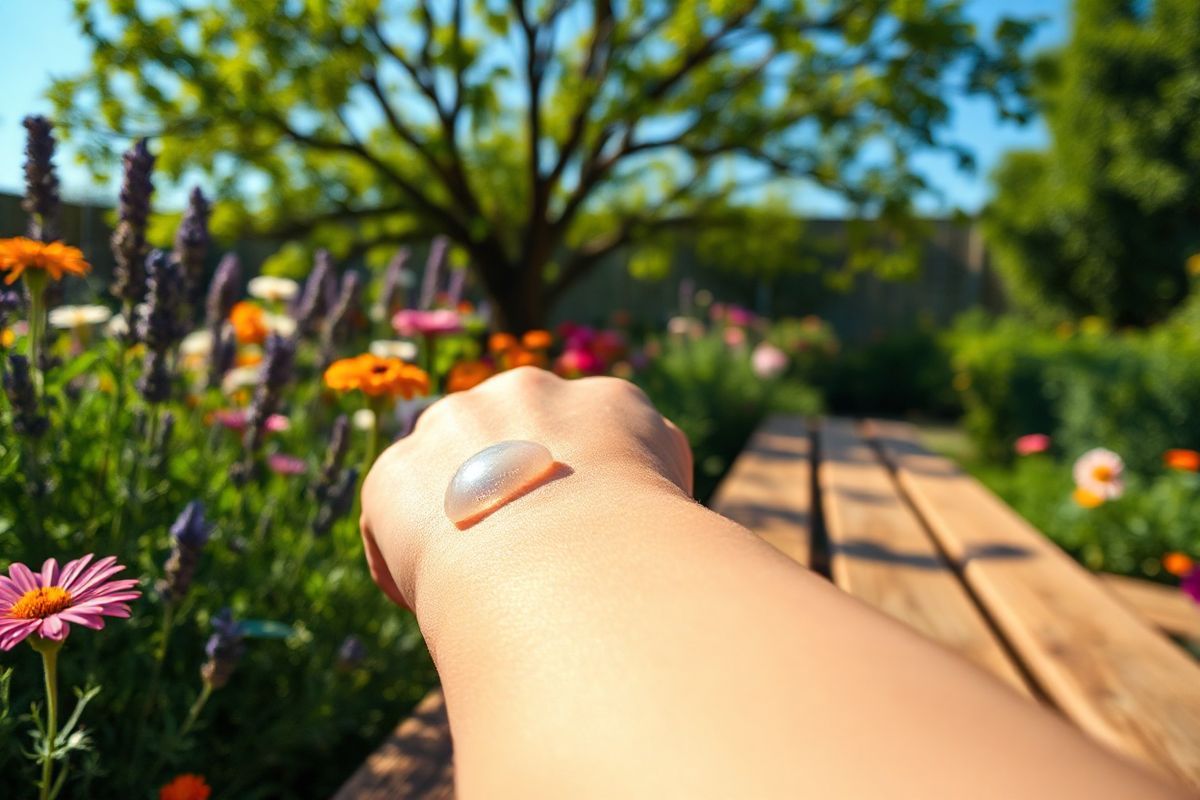Table of Contents
What is Basal Cell Carcinoma? An Overview of Skin Cancer

Basal cell carcinoma (BCC) is a prevalent form of skin cancer that arises from basal cells, which are located in the lower part of the epidermis—the outermost layer of skin. BCC is recognized as the most common type of skin cancer, accounting for approximately 80% of all skin cancer cases (Christensen, 2024). It is characterized by its slow growth and low likelihood of metastasizing, which distinguishes it from more aggressive types of skin cancer like melanoma.
Patients often present with lesions that appear as small, shiny bumps or scaly patches that can grow over time. BCC is predominantly found in areas of the skin that are frequently exposed to sunlight, such as the face, neck, and arms. While it can affect individuals of all skin types, those with fair skin, light eyes, and blond or red hair are at a higher risk (Cleveland Clinic, 2024).
The Importance of Early Detection
Early detection of BCC is critical, as it allows for easier and more effective treatment. The lesions, when caught early, can often be removed without extensive surgical procedures. Delayed treatment, however, can lead to more significant complications and deeper tissue invasion, making treatment more challenging (CDC, 2024).
Recognizing the Different Types of Basal Cell Carcinoma

BCC can manifest in several forms, each with distinct characteristics. The four primary types of BCC include:
-
Nodular Basal Cell carcinoma: This is the most common subtype, presenting as a pearly or shiny nodule that may have visible blood vessels. It typically occurs on the face and can ulcerate over time.
-
Superficial Basal Cell Carcinoma: This type presents as a flat, scaly patch that is slightly raised and often lighter than the surrounding skin. It is more common in younger adults and typically appears on the trunk and shoulders.
-
Sclerosing (Morpheaform) Basal Cell Carcinoma: These lesions resemble scars and are often mistaken for benign skin conditions. They can infiltrate the surrounding tissue and are most commonly found on the face.
-
Pigmented Basal Cell Carcinoma: This rare form contains melanin, giving it a darker appearance. It may resemble melanoma due to its pigmentation.
Understanding these types is essential for both patients and healthcare providers, as it informs diagnosis and treatment strategies (DermNet, 2024).
Risk Factors and Causes of Basal Cell Carcinoma
The development of BCC is primarily associated with prolonged exposure to ultraviolet (UV) radiation, either from natural sunlight or artificial sources like tanning beds. Over time, UV exposure can cause mutations in the DNA of skin cells, leading to uncontrolled cell growth that characterizes cancer.
Key Risk Factors
-
Age and Sex: BCC is more prevalent in older adults, particularly males. However, it can also affect younger individuals.
-
Skin Type: Individuals with fair skin, light-colored eyes, and a history of sunburn are at a higher risk for developing BCC.
-
Previous Skin Cancer: A history of BCC or other skin cancers increases the likelihood of developing new lesions.
-
sun Exposure: Cumulative sun exposure, particularly in childhood and adolescence, significantly raises the risk.
-
Genetic Factors: Certain inherited conditions, such as basal cell nevus syndrome, increase susceptibility to BCC.
-
Environmental Factors: Exposure to radiation, arsenic, and certain chemicals can also elevate risk levels (Cancer Research UK, 2024).
Symptoms and Signs: How to Identify Basal Cell Carcinoma
Recognizing the symptoms of BCC is crucial for early diagnosis. Common signs include:
-
Persistent Skin Lesions: These may appear as shiny bumps, scabs, or flat patches that do not heal.
-
Translucent or Pearly Appearance: Nodular BCC may have a translucent quality, making them look like small pimples with visible blood vessels.
-
Color Variations: Pigmented BCCs may display dark brown or blue areas, while superficial types may be lighter than the surrounding skin.
-
Itching or Pain: Some patients report discomfort or itching in the affected area.
-
Ulceration: Advanced BCCs may ulcerate, causing bleeding or oozing (Christensen, 2024).
Visual Examples
| Type of BCC | Description |
|---|---|
| Nodular | Shiny, pearly nodule with rolled edges |
| Superficial | Flat, scaly patch, often lighter than skin |
| Sclerosing (Morpheaform) | Scar-like, waxy plaque with indistinct borders |
| Pigmented | Darker lesions, may resemble melanoma |
Treatment Options for Basal Cell Carcinoma: A Path to Recovery
Treatment for BCC largely depends on the type, size, and location of the cancer, as well as the patient’s overall health. The primary treatment modalities include:
-
Surgical Excision: This involves the complete removal of the cancerous tissue along with a margin of healthy skin. This method is effective for most types of BCC.
-
Mohs Micrographic Surgery: This specialized technique allows for the precise removal of cancerous cells while preserving healthy tissue. It is particularly useful for cancers located on the face.
-
Electrodessication and Curettage: This method involves scraping away the cancerous tissue and using electricity to destroy any remaining cells. It is often used for superficial BCCs.
-
Cryotherapy: This treatment freezes the cancerous cells, causing them to die off. It is typically reserved for small, superficial lesions.
-
Topical Chemotherapy: Creams containing chemotherapy agents can be applied to the skin to treat superficial BCCs effectively.
-
Photodynamic Therapy: This involves applying a light-sensitive agent to the skin, which is then activated by a special light to destroy cancer cells.
-
Radiation Therapy: While not the first-line treatment, radiation may be used for patients who are not candidates for surgery (DermNet, 2024).
Potential Complications of Untreated BCC
If left untreated, BCC can grow progressively, potentially invading deeper layers of skin, muscle, and bone. This can lead to ulceration, pain, infection, and in rare cases, metastasis (Cleveland Clinic, 2024).
FAQ Section
What increases my risk for basal cell carcinoma?
Factors such as fair skin, sun exposure, age, a history of skin cancer, and genetic predispositions can increase your risk.
Can basal cell carcinoma spread to other parts of the body?
It is very rare for BCC to metastasize, but if left untreated, it can grow deeper and cause significant local damage.
How can I prevent basal cell carcinoma?
Preventive measures include avoiding excessive sun exposure, wearing protective clothing, and using high-SPF sunscreen.
What should I do if I notice a suspicious spot on my skin?
Consult a dermatologist promptly if you notice any persistent skin changes or lesions that do not heal.
What is the prognosis for basal cell carcinoma?
The prognosis is generally very good, especially when detected early. Most cases can be treated effectively with a high cure rate.
References
- Cleveland Clinic. (2024). Basal Cell Carcinoma: Causes, Symptoms & Treatment. Retrieved from https://my.clevelandclinic.org/health/diseases/4581-basal-cell-carcinoma
- DermNet. (2024). Basal Cell Carcinoma: Symptoms, Causes, and Treatment. Retrieved from https://dermnetnz.org/topics/basal-cell-carcinoma
- Cancer Research UK. (2024). Types of skin cancer. Retrieved from https://www.cancerresearchuk.org/about-cancer/skin-cancer/types
- Christensen, S. (2024). Basal Cell Carcinoma (BCC). Retrieved from https://www.yalemedicine.org/conditions/basal-cell-carcinoma
- CDC. (2024). Skin Cancer Basics. Retrieved from https://www.cdc.gov/skin-cancer/about/index.html










